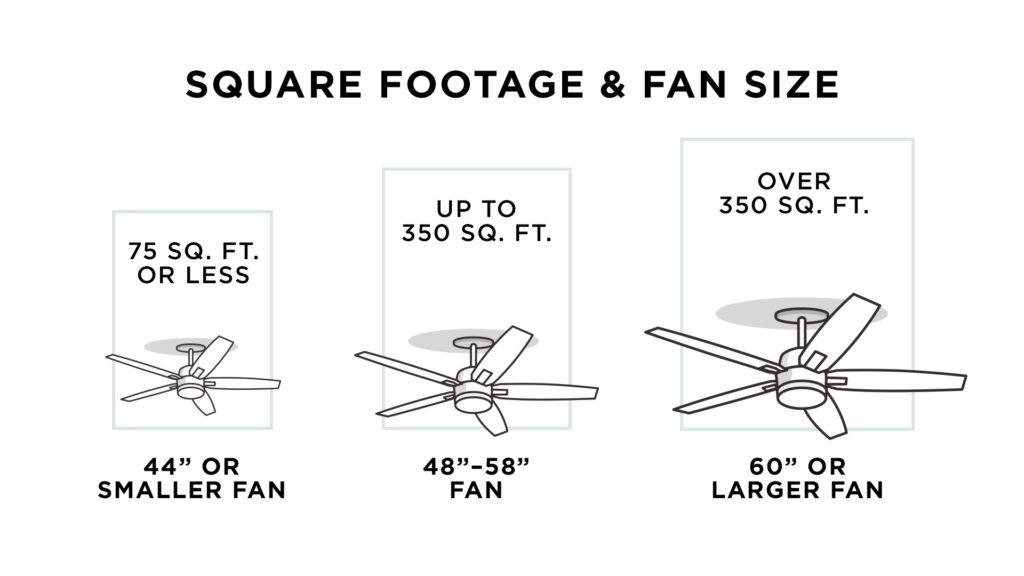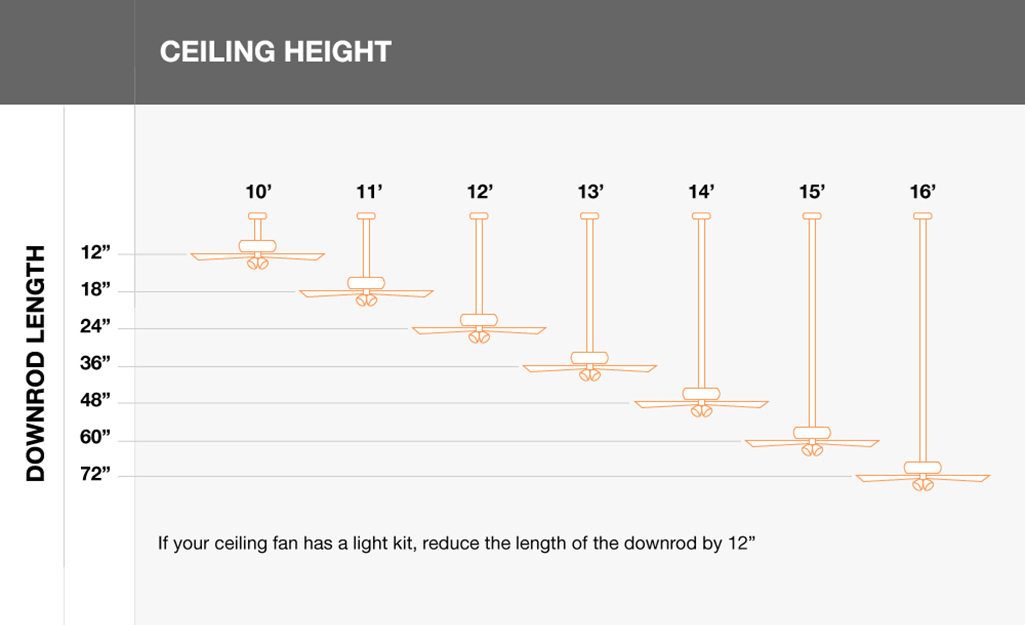Ceiling fans circulate air to keep any area of your home comfortable and to help you save on your energy bill they can also add an extra touch of style to your home decor.
What size ceiling fan do i need for a 10 x 13 room.
Powerful fans are significant in cooling rooms of this size.
Air conditioners chill air but ceiling fans push it around which means they re useful for both cooling and heating.
In a bedroom a ceiling fan encourages restful sleep without running the air conditioning.
For example a kitchen ceiling fan will be much smaller in blade diameter and length than a ceiling fan for the living room.
You can also refer to the downrod length chart below for additional guidance in selecting the right measurement.
Ceiling fan sizes by room.
What size fan do i need.
Standard rooms vary from 10 x 10 to 16 x 16 100 to 256 sq ft and include large bedrooms living rooms and large kitchens.
A ceiling fan s primary purpose is to circulate air in a room.
Whether you re replacing an old fan updating an existing room or building a new home this guide will help you find the best ceiling fans for your style ceiling height size of your space and your budget.
Use the ceiling fan size chart below to get the best idea of what size you need.
A small ceiling fan in a large room will have to work twice as hard to cool you off which will result in the motor burning out quickly.
To install a fan of this size in a small room means that you are buying far more air moving capacity than is needed.
Most ceiling fan sizes are also determined by the room they will be placed in.
For example if your ceiling is 12 feet high and your ceiling fan is 12 inches in height you will need a 24 inch downrod to mount the ceiling fan between eight and nine feet above the floor.
The main cooling effect is felt from directly beneath a ceiling fan and drops off dramatically within about 1 foot from the blades.
This will ensure maximum airflow in the room and optimal performance.
Establishing the proper ceiling fan size for your room secures the fan s performance and longevity as well as the comfort and safety of the room occupants.
If the ceiling fan is too small for the room it has to run at a higher speed in order to be effective.
If the fan is in the middle of the room with seating off to the side use as large a fan as you can handle that has the highest wind speed refer to our mph ratings.
Determining the correct ceiling fan size for a room is important because fans are meant to move a certain volume of air.
The american lighting association recommends the following guidelines for room and ceiling fan size.
A 44 inch ceiling fan for example will move 3 600 to 3 700 cubic feet of air per minute.
A room with up to 75 square feet can accommodate fans in the 29 to 36 inch range.









